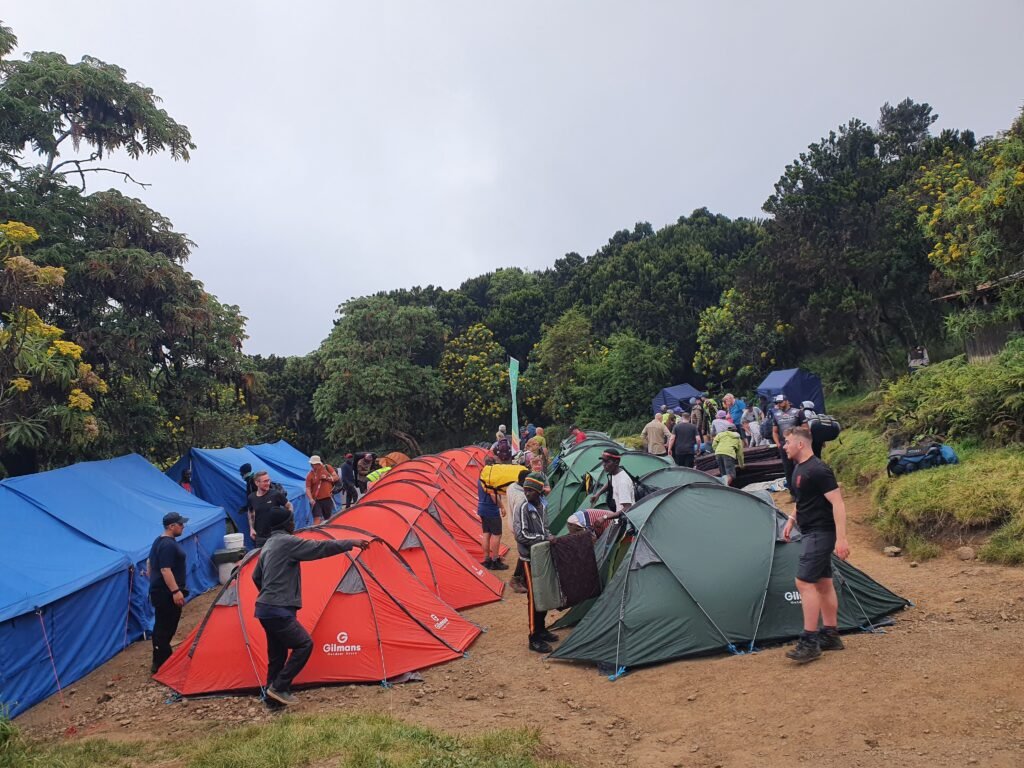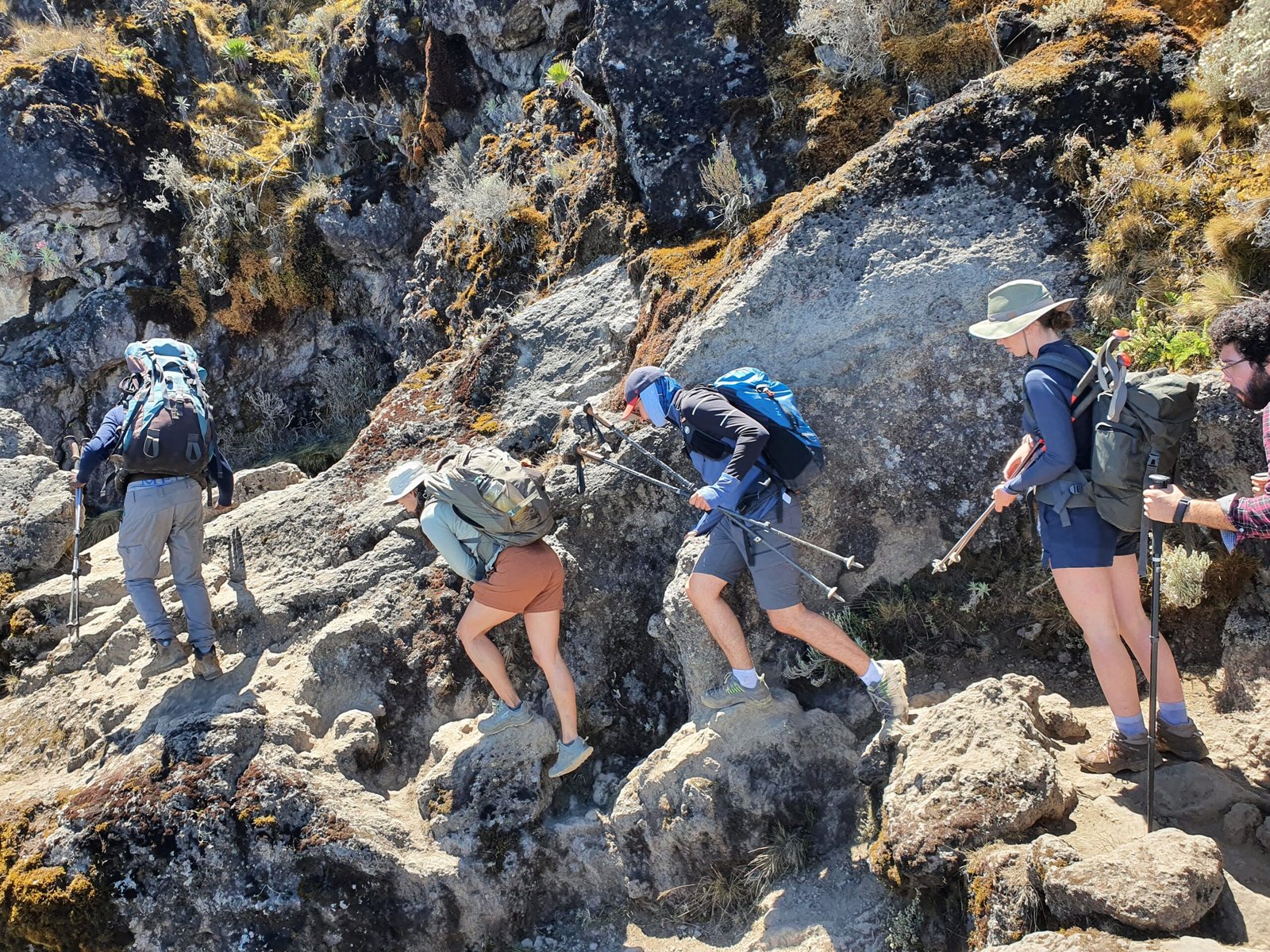The best Kilimanjaro Climbing Routes Explained: Which Route is ultimate Right for You? in 2025 – 2026
Climbing Mount Kilimanjaro is an extraordinary experience, and with several routes to choose from, it’s important to select the one that best fits your goals, fitness level, and trekking style. Each Kilimanjaro climbing route offers different scenery, challenges, and success rates. In this guide, we’ll explain the most popular Kilimanjaro routes and help you decide which one is right for you. Plus, we’ve included a detailed

7-day Machame Route itinerary to help you plan your adventure.
1. Machame Route: The Most Scenic and Popular Option
Duration: 6-7 Days
Difficulty: Moderate to Hard
Success Rate: 85% (7-day itinerary)
Scenery: Highly scenic, diverse landscapes
The Machame Route, also known as the “Whiskey Route,” is one of the most popular and scenic routes to Kilimanjaro’s summit. This trail offers diverse landscapes, including lush rainforests, alpine deserts, and stunning views of glaciers as you approach the summit. The route is known for its “climb high, sleep low” approach, which helps with acclimatization and improves success rates. It’s a great option for adventurous climbers who want a varied and visually rewarding experience.
2. Marangu Route: The Easiest Path with Hut Accommodations
Duration: 5-6 Days
Difficulty: Moderate
Success Rate: 65%-75%
Scenery: Rainforest, moorland, fewer scenic points
Also called the “Coca-Cola Route,” the Marangu Route is the only trail that offers dormitory-style hut accommodations, making it a comfortable option for climbers who prefer not to camp. The route is shorter and more direct but has a lower success rate due to the quick ascent. It is ideal for beginners or those looking for a more straightforward trek, though it offers fewer scenic views than other routes.
3. Lemosho Route: The Most Beautiful and Remote Trail
Duration: 7-8 Days
Difficulty: Moderate
Success Rate: 90%
Scenery: Remote, with stunning landscapes and fewer crowds
The Lemosho Route is considered one of the most beautiful routes to Kilimanjaro, starting on the western side of the mountain. It offers a longer and more gradual ascent, allowing for better acclimatization and fewer altitude-related issues. The route is less crowded, making it perfect for trekkers seeking a quieter, more peaceful experience. It also joins the Machame Route partway up the mountain, so you’ll still enjoy many of the same scenic highlights.
4. Rongai Route: The Quiet, Northern Approach
Duration: 6-7 Days
Difficulty: Moderate
Success Rate: 70%-80%
Scenery: Drier, less scenic, but with a remote feel
The Rongai Route is the only trail that approaches Kilimanjaro from the north, near the Kenyan border. It’s drier and less scenic compared to other routes, but it’s also quieter, offering a more solitary experience. This route has a more gradual ascent, making it easier on the body, though the descent follows the crowded Marangu Route. It’s a good choice for climbers who want to avoid the busier southern routes.
5. Umbwe Route: The Steepest and Shortest Climb
Duration: 5-6 Days
Difficulty: Hard
Success Rate: Lower due to rapid ascent
Scenery: Forest, ridges, and steep inclines
The Umbwe Route is the steepest and most direct route to the summit, offering a challenging and demanding climb. Because of its rapid ascent, it doesn’t allow much time for acclimatization, resulting in lower success rates. This route is suited for experienced and fit climbers looking for a tougher and shorter trek. The trail passes through some beautiful areas but is less popular due to its difficulty.
Which Route Is Right for You?
Choosing the right route depends on several factors, including your fitness level, experience, and the kind of experience you want. Here’s a quick summary to help you decide
For first-timers or those looking for comfort: Choose the Marangu Route for a shorter, easier climb with hut accommodations.
For scenic beauty and variety: The Machame Route or Lemosho Route offers the best landscapes and acclimatization options.
For a quieter, remote experience: The Rongai Route provides a more solitary trek with fewer crowds.
For experienced trekkers seeking a challenge: The Umbwe Route is the steepest and most difficult option.
7-Day Machame Route Itinerary
The 7-day Machame Route is highly recommended for its balance between challenge and acclimatization. It provides stunning scenery while giving climbers ample time to adjust to the altitude, leading to a high success rate. Here’s a detailed day-by-day itinerary:

Day 1: Machame Gate to Machame Camp
Elevation: 1,800m to 3,000m
Distance: 11km
Time: 5-7 hours
Start your trek through the dense rainforest at Machame Gate. The trail gradually ascends, passing through lush vegetation with a variety of flora and fauna. You’ll reach Machame Camp by late afternoon for your first night on the mountain.
Day 2: Machame Camp to Shira Camp
Elevation: 3,000m to 3,850m
Distance: 5km
Time: 4-6 hours
On Day 2, you’ll leave the rainforest and enter the moorland zone. The trail becomes steeper, with incredible views of the Shira Plateau and Mount Meru in the distance. The day ends at Shira Camp, where you’ll enjoy the expansive views of the plateau.
Day 3: Shira Camp to Barranco Camp via Lava Tower
Elevation: 3,850m to 3,960m (via Lava Tower at 4,600m)
Distance: 10km
Time: 6-8 hours
Today’s hike focuses on acclimatization. You’ll ascend to Lava Tower (4,600m) before descending to Barranco Camp. This “climb high, sleep low” approach helps your body adjust to the higher altitude. The day ends at Barranco Camp, located below the imposing Barranco Wall.
Day 4: Barranco Camp to Karanga Camp
Elevation: 3,960m to 4,200m
Distance: 6km
Time: 4-5 hours
The day starts with an exhilarating scramble up the Barranco Wall, followed by a gentler trek through the Karanga Valley. You’ll arrive at Karanga Camp for an afternoon of rest and acclimatization.
Day 5: Karanga Camp to Barafu Camp
Elevation: 4,200m to 4,640m
Distance: 4km
Time: 4-5 hour
On Day 5, you’ll continue your ascent through the alpine desert to Barafu Camp, the base camp for your summit attempt. You’ll arrive in the early afternoon to rest and prepare for the midnight summit push.
Day 6: Barafu Camp to Uhuru Peak (Summit) and Descend to Mweka Camp
Elevation: 4,640m to 5,895m (Uhuru Peak) and descend to 3,100m
Distance: 5km ascent, 12km descent
Time: 12-14 hours
Summit day starts at midnight, with a steep climb to Stella Point (5,739m), followed by a final trek to Uhuru Peak, the highest point in Africa. After celebrating at the summit, you’ll begin the long descent to Mweka Camp, where you’ll rest for the night.
Day 7: Mweka Camp to Mweka Gate
Elevation: 3,100m to 1,800m
Distance: 10km
Time: 3-4 hours
The final day is an easy descent through the rainforest to Mweka Gate. Once you reach the gate, you’ll receive your summit certificate, marking the end of your incredible Kilimanjaro adventure.
Final Thoughts: Which Kilimanjaro Route Will You Choose?
Choosing the right Kilimanjaro route depends on your experience level, fitness, and what you’re looking for in a trek. Whether you opt for the scenic Machame Route, the comfortable Marangu Route, or the remote Lemosho Route, you’re sure to have an unforgettable experience as you trek toward the summit of Africa’s highest peak.
Ready to start your Kilimanjaro journey? Choose your route and book your adventure today!
This guide is optimized with keywords like “Kilimanjaro climbing routes,” “which route is right for you,” “Machame Route itinerary,” and “7-day trek” to help improve search rankings

